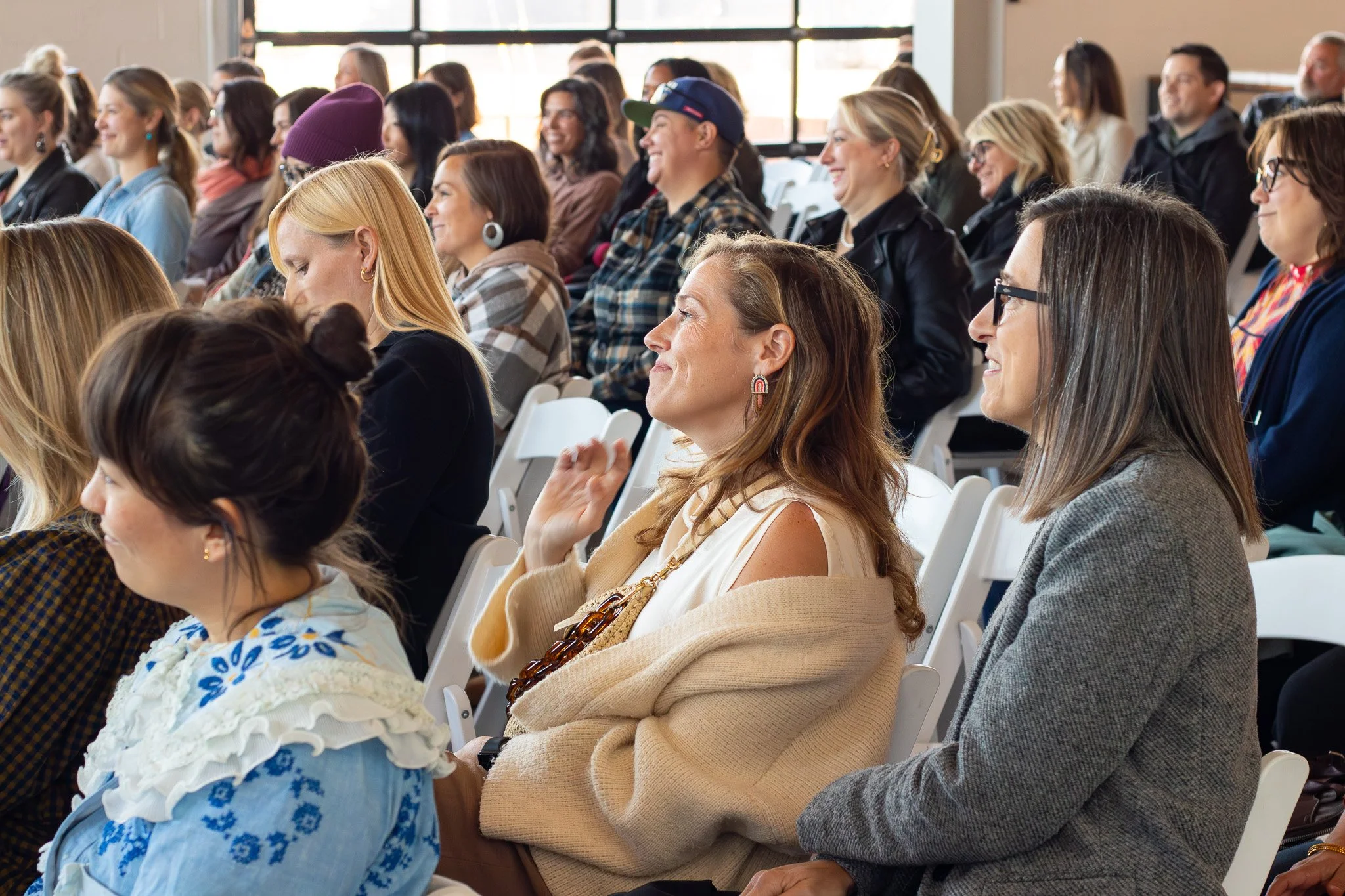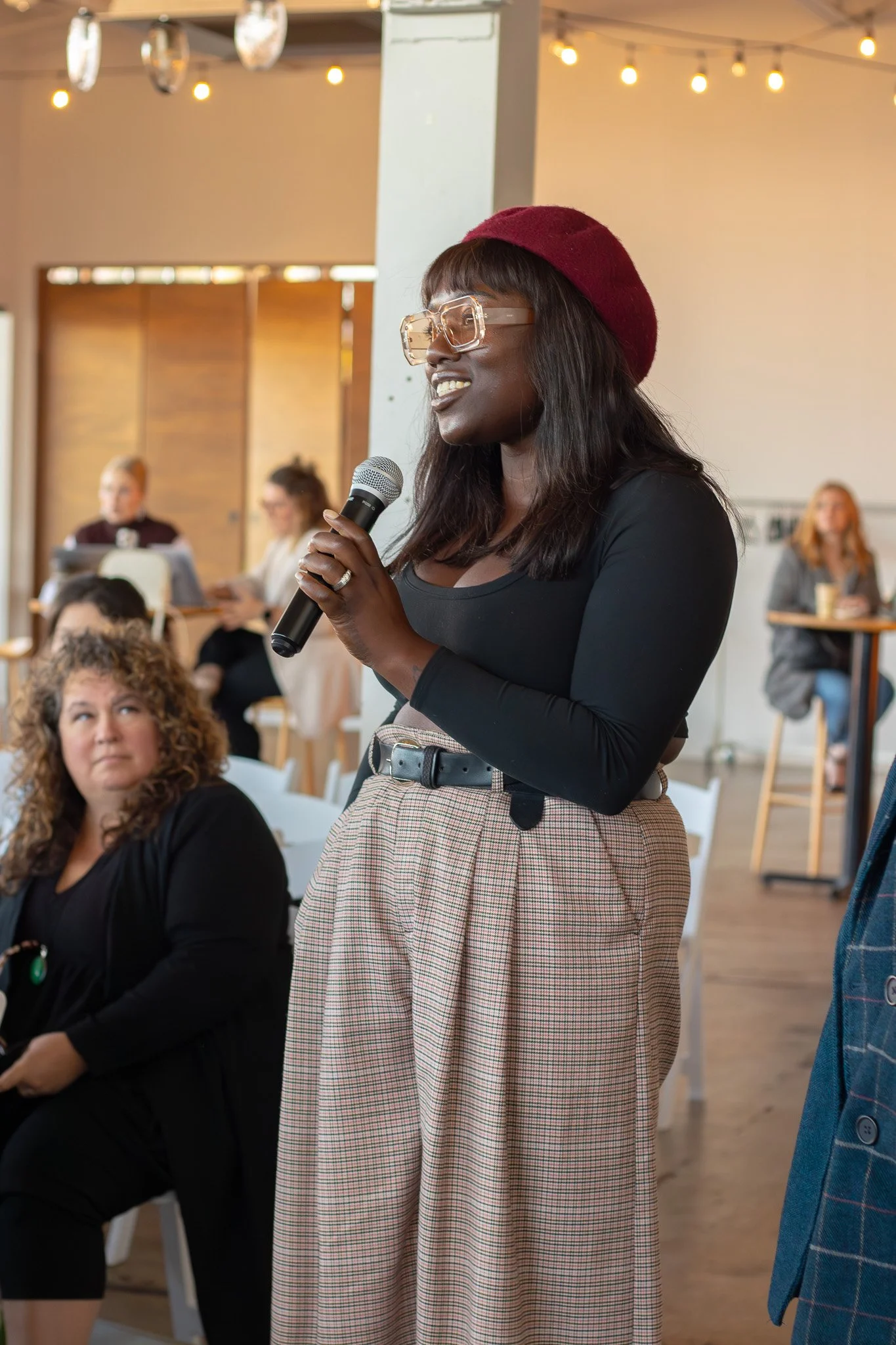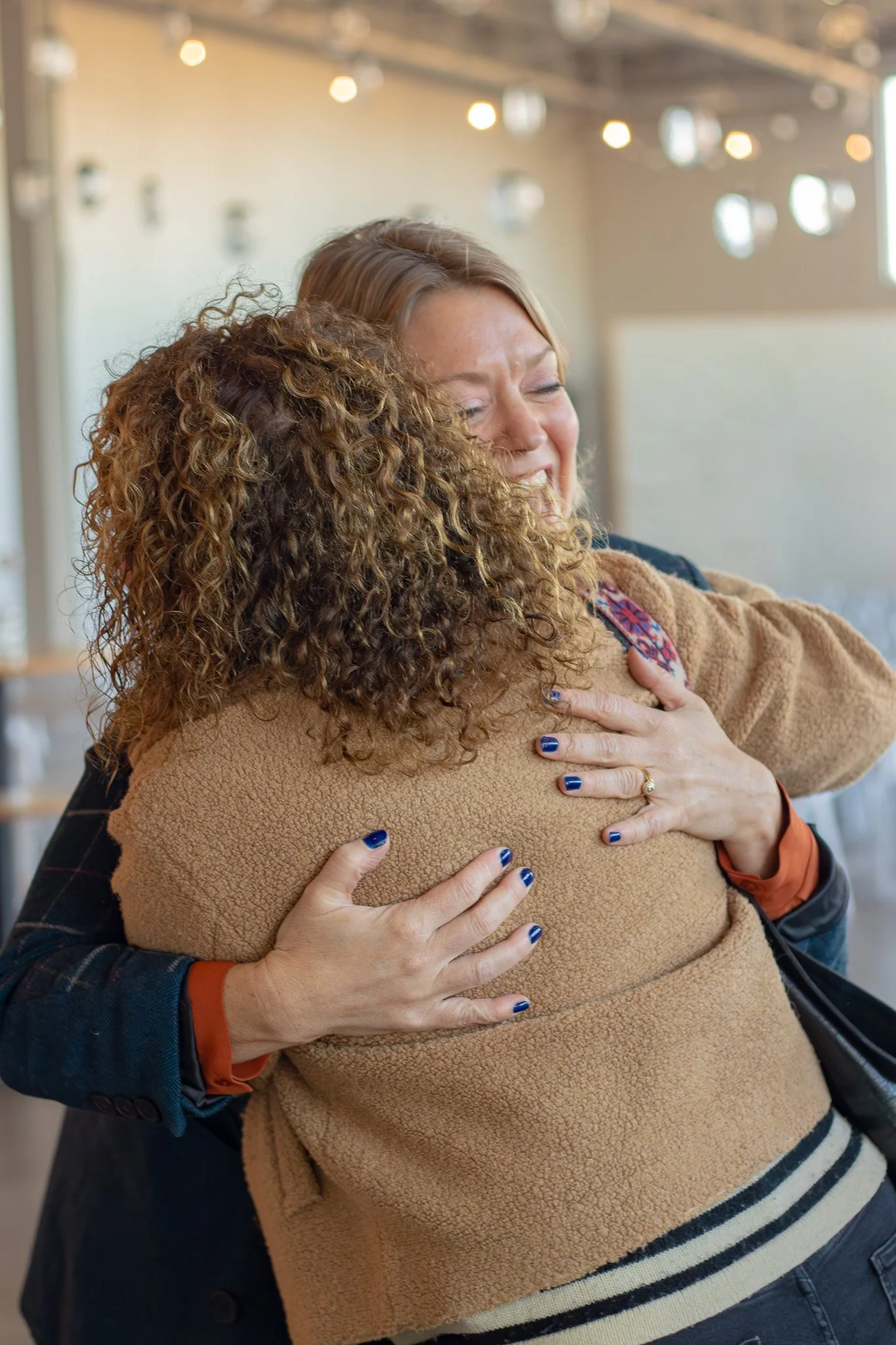The Spirit of Survivalism and Reaching the Bamboo Ceiling: Inside our Culinary Experience LAB Talks
BY EMMA GEARY - OCTOBER 23, 2024
The Twin Cities dining scene continues to make waves, earning accolades from the James Beard Foundation, The New York Times, Bon Appétit, and so many more. Yet, the true magic of our vibrant culinary community is found closer to home, within the restaurants that keep our reservation lists full and our hearts even fuller.
This October, the final LAB Talk of our 2024 series offered a chance to celebrate that magic—bringing food, creativity, and conversation together around a free cup of coffee with our community.
Moderated by Alison Arth of Salt & Roe, the panel included James Beard Award-winning Christina Nguyen of Hai Hai and Hola Arepa, Aaron Wittkamper of Wittkamper Studio, and Mike Brown of the Travail Collective and the soon-to-open Stargazer. We gathered at Glass House for a conversation that revolved around what it truly means to craft a culinary experience, from the DIY origins of early restaurants to the high-stakes risks involved in developing a unique concept.
Finding Inspiration: The Seeds of a Restaurant Concept
Alison kicked things off by asking about inspiration, alluding to the idea that the finished concept is like a flower in bloom. So, where do these culinary gardeners find their seeds of inspiration?
“For me, it all starts with atmosphere,” said Aaron Wittkamper, whose work on Tattersall Distilling sparked his passion for designing restaurant spaces. “I think about what the space will feel like on a packed Friday night at 8 p.m. What’s the energy? Who’s in the kitchen? Who’s behind the bar when the lights are down? I like to understand the essence of a place and its people before moving on to the technical aspects. Ultimately, a restaurant should reflect its creators like a mirror.”
Christina, who has been a serial entrepreneur from the start, approaches her restaurant concepts as if they were art installations. “Hola Arepa was inspired by beachside cafes—places where you can sit, relax, and escape. We started with a tiny budget, so we did much of the design ourselves. If anyone wants to know how to set up a paint booth in a tent, I’ve got you,” laughed, recalling the early days. “At Hai Hai, we had a bigger budget, but I still wanted it to feel personal. The cinderblock walls remind me of my grandparents’ home in Vietnam, and I used traditional blue and white pottery that’s been seen as stuffy in the past, but I thought it was cool. Being born and raised in Minnesota, I grew up with this sense of escapism to see new places. I love it when people say visiting Hai Hai or Hola Arepa makes them feel like they’re not in MN, because travel has always made things feel fresh for me.”
Mike shared how he came from a fine-dining background, but wanted to create something that felt more approachable and like people could connect with it, but do it in the most exceptional way possible. “When we opened Travail, we did it with a tiny budget and loans from our family. I had $2000 left in my bank account. The spirit of survivalism is baked into what we do in the restaurant industry–I mean, even if you’re killing it, your margins are probably only at 10%--so we wanted to show the world that we could cook and give them a good time. Even in the early days, the “garage version” of Travail as we like to call it, the goal was always designed to gather people together.”
Balancing Art and Commerce: The Hidden Design of a Restaurant
When Alison asked about the balance between artistic vision and commercial practicality, Aaron noted the importance of designing spaces that seamlessly guide patrons through their evening. “Half of my work is in the stuff you shouldn’t notice—the subconscious elements of a restaurant. How do people move through the space? Where are those key moments that leave a lasting impression? And how do you balance all of that while being economical about the areas where you don’t need to make an impact, like the ceiling? The budget’s always a factor, but it’s about prioritizing the moments that matter and building everything else off of them.”
Christina touched on the vulnerability that comes with sharing a piece of yourself through a restaurant. “It’s a deeply personal thing, opening a restaurant. You’re essentially saying, ‘Here’s my best—what do you think?’ People value food and hospitality in different ways, so I’ve tried to keep that in mind as I hear feedback. For example, I didn’t put Pho on the menu at Hai Hai because I wanted to push beyond what people expected from Vietnamese food. When we first opened, I put my mother’s egg rolls on the menu as an appetizer. We served them as two on a plate with lettuce to wrap around them and plenty of fresh herbs and it cost $7. I remember some people being outraged that it cost $7 for two egg rolls, but those are made by hand in a labor-intensive process with a family recipe–it’s more than cheap eats.”
Christina coined this balance the “bamboo ceiling,” fine-tuning the labor and quality ingredients in a dish while still making it approachable and valuable for a customer. These two elements are always in conversation with each other.
The Emotional Energy of a Restaurant
One recurring theme throughout the panel was the importance of emotional energy—not just from customers, but also from the staff. “If you want to create a space that feels like a vacation, like an escape, that energy has to start with the staff,” Christina said. “If they feel supported and can be themselves, that energy will translate to the guests.”
Mike agreed, sharing that the restaurant business is one of the few industries that “rides the wave of people’s emotions.” “We’re in a business that depends on real human connection. You can’t fake that. That’s why we’ve never played the location, location, location game. For us, it’s always been about the concept and making sure we ride the ups and downs with our guests.”
An audience member asked how these culinary creatives manage the inevitable stress of running a restaurant. Aaron shared that he practices Kundalini yoga and meditation, which helps keep him grounded. Christina emphasized the importance of physical exercise in maintaining her mental well-being. Mike summed up his approach with three words: The “Fuck fear mindset.”
Taking Hospitality Home
This LAB Talk offered more than just a peek behind the curtain of our city’s most beloved restaurants—together, we celebrated the resilience, creativity, and community that define our local dining scene. To give our own nod to exceptional hospitality, we sent everyone home with homemade granola inspired by a parting gift that was famously shared as a parting gift at one of the world’s best restaurants, Eleven Madison Park (recipe linked here!).
Thank you to everyone who joined us, and to our lovely hosts at Glass House. We can’t wait to see you in 2025 for another year of conversation and community!
Emma Geary
Emma is the one writing it all down. She's been with LAB since 2021 and is finishing her MFA in Creative Writing in her spare time. Her favorite color right now is cobalt blue.








